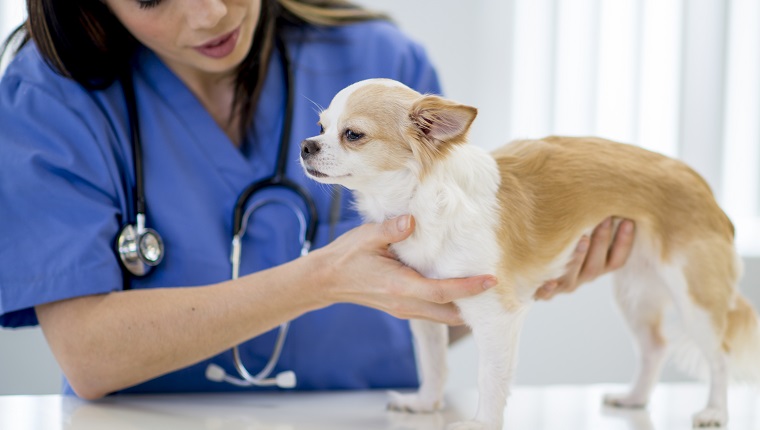Folliculitis in dogs is a condition where some of the dog’s hair follicles become inflamed. It usually occurs when bacteria infects the hair follicles.

When a dog suffers from this condition, they normally develop small, reddish, pus-filled bumps, called papules, on their skin. These bumps can irritate the dog and also cause excessive itching.
If you see the signs of folliculitis in your dog, then you must get to a veterinarian for a proper diagnosis and treatment. Here’s what you should know about the symptoms, causes, and treatments for folliculitis in dogs.
Symptoms Of Folliculitis In Dogs
Folliculitis in dogs primarily presents itself as a number of small, red bumps that develop on the dog’s skin. These papules are often filled with pus.
Beyond papules, some other common symptoms include:
- Skin becoming darker
- Hair loss around the affected area
- Experiencing pain around the affected area
Causes Of Folliculitis In Dogs

Folliculitis in dogs happens when the hair follicles become inflamed. A bacterial infection caused by the Staphylococcus bacteria is a prime cause of this.
In other cases, fungal infections can also cause folliculitis in dogs, along with various traumas.
Treatments For Folliculitis In Dogs
If your veterinarian suspects that your dog is suffering from folliculitis, they’ll carry out a full physical examination while paying special attention to the area showing symptoms. Your vet will also want to know about your dog’s medical history and any specific symptoms you’ve noticed.
In some cases, vets may recommend a skin biopsy. Sometimes, they’ll carry out skin cytology, which involves examining skin cells under a microscope.
Once the vet confirms their diagnosis, they’ll usually recommend a combination of three types of treatment. Topical therapy will involve applying medicines like antimicrobial shampoos or ointments to the affected area.
Next, systemic therapy can include the use of antibiotic medicine.
Finally, your vet will look into ways to treat the underlying cause of your dog’s folliculitis.
Has your dog ever had folliculitis? What advice did your vet give you on helping your dog recover? Let us know in the comments section below!









